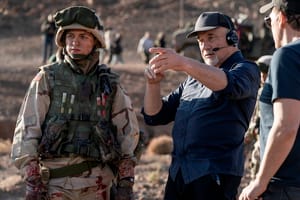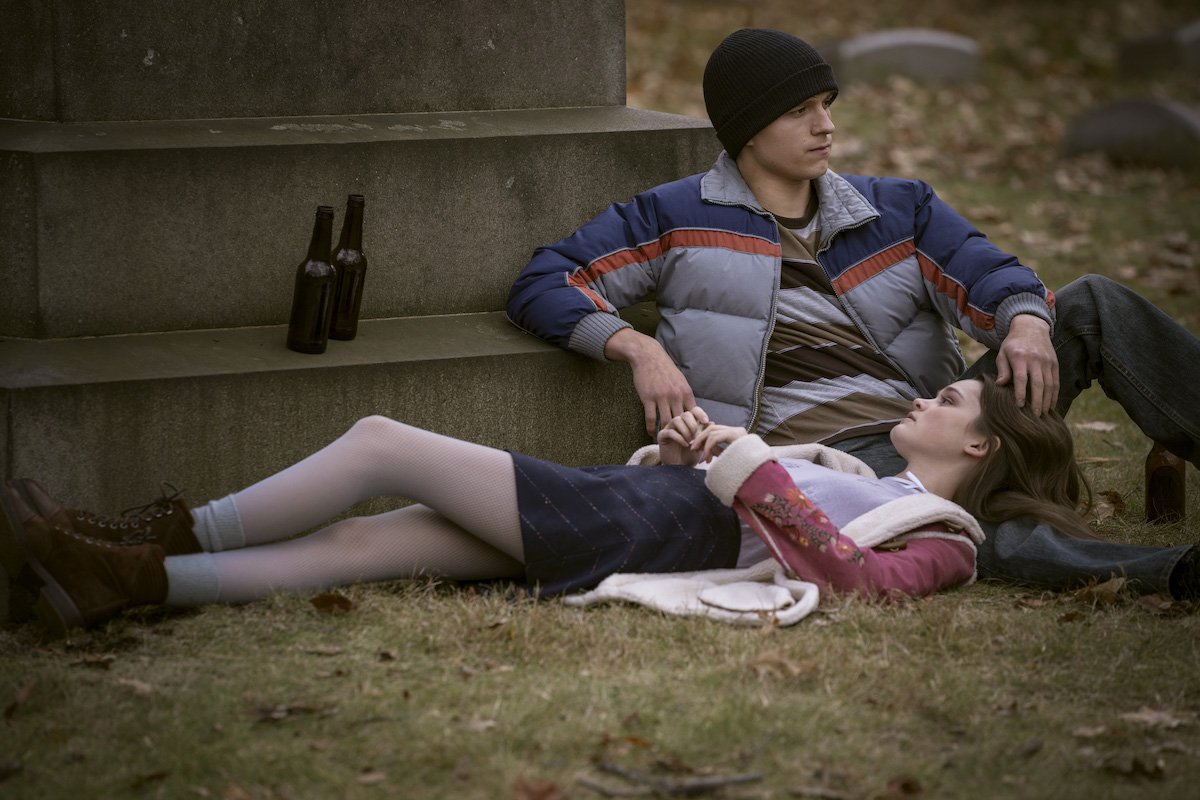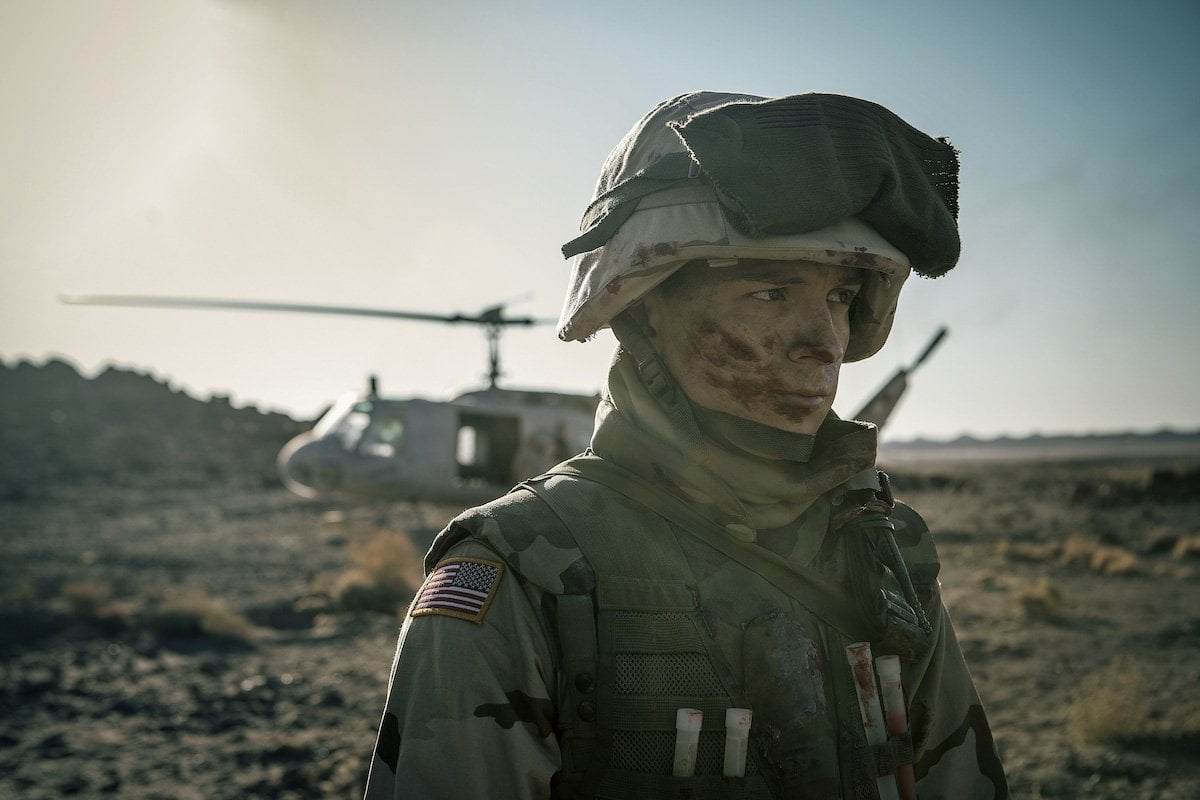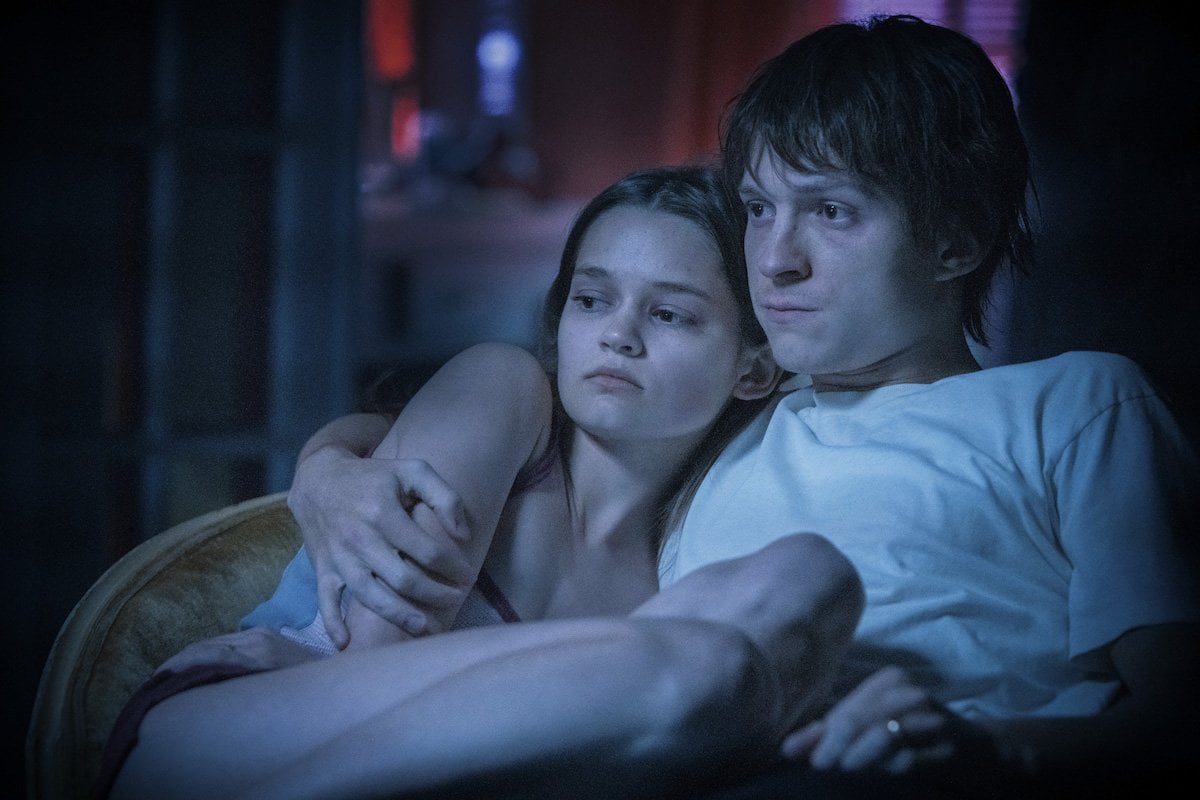
Newton Thomas Sigel is the cinematographer for Cherry, the latest from Anthony and Joe Russo. The adaptation of Nico Walker’s novel stars Tom Holland as an unnamed soldier from Cleveland — nicknamed “Cherry” — who begins robbing banks to feed an opioid addiction. Below, Sigel explains how he worked with the Russos to develop a distinct visual look for all six of the film’s chapters. Many spoilers follow.
Pre-Production
The whole book is filled with a certain absurdist irony that I think, to a certain degree, is a coping mechanism for all of the inner demons that Nico and many other people have. The book has its own voice, and there was something that made it very different from your other tales of drug addiction and stuff that we’ve read. Honestly, when I read the book, I found it really depressing. And I was like, ‘Oh, my God, do I really want to make a movie about this?’ But the way that the Russos and the screenwriters incorporated the love story, the script elevated the book, profoundly. I felt much better about doing the movie after reading the script than I did after reading the book.
I eagerly agreed to do it, and we immediately started talking about how to visualize this piece, because, this story — PTSD, drug addiction, bank robbery — we’ve seen all these things before in many movies, many books.
But what was new and engaging here was the voice and the way the story was being told, first, in the book by Nico Walker: this first-person account with a strange, both intimate and yet ironic, absurdist quality. The screenplay took that to a whole other level with the use of voiceover and breaking the fourth wall.
Then we started getting into this concept that the book is written in chapters, that there’s these different sections that each had their own voice, their own purpose for being there and their own intentionality. We talked about how you define that.
Part One: When Life Was Beginning I Saw You

Tom Holland and Ciara Bravo in Part One of Cherry, directed by the Russo brothers and lensed by Newton Thomas Sigel. Photos courtesy of Apple
In the initial chapter, Cherry meets Emily for the first time and falls in love, and he develops this infatuation with her, and she eventually breaks his heart. Joe and Anthony often talked about that as magical realism. It had its own romantic, lyrical quality to it, in the pacing of the shots and the choice of lenses. We used very old Todd AO anamorphic lenses, which were a lens originally designed in the ’50s, and then advanced in the ’70s as one of the competing formats for widescreen photography.
Everything up to Basic training is done with these anamorphic lenses. We used 40, 50, 100mm lenses — so we’re using a longer lens, yet with a wider field of view with very soft backgrounds.
This initial section of the movie is very much on dolly or SteadiCam. It’s composed, very lyrical with slower shots that evolve.
Part Two: Basic
Most of basic training was a static camera and are all done with only one lens, which was a 14mm Sigma spherical. So each moment of basic training had a very singular presentation and it’s own particular aspect ratio, which was 1:66:1 as opposed to the widescreen of the rest of the film.
Basic training was meant to have an element of absurdism to it, in terms of the absurdity of the fact that he joined the Army because of a broken heart and he realizes that he’s made a terrible decision. And with the 14mm lens in a 6K format, we’re using the entirety of the lens. We’re maximizing some of the distortion and the extreme field of view of the lens, which also necessitates putting the subject physically closer to the lens. So it creates a very different feeling than everything that came before it, and frankly, everything that comes after it in the movie. Basic training had its own very singular look.
Part Three: Cherry

Tom Holland in Part Three chapter of Cherry, directed by the Russo Brothers and lensed by Newton Thomas Sigel
To achieve this section we went to spherical, and we shot with the Leica M Series lenses, which are the traditional older-style Leica still lenses that photojournalists have used for many, many years. So we were inherently shooting with a wider focal length than we were for the earlier and later parts of the movie. That was part and parcel of this more reality-based, shall we say, or a greater degree of realism than, than we had in the earlier and later parts of the movie. Even within that, there was a subtle shift between the staging of the battle scenes from the scenes at the Army base.
When we were at the base, it was the same lens and camera package, but in there we were back onto the dolly with a little more of a nod toward what Cherry’s world was like, or a connection between the safety and security of the base with the cultural reference from which he came. And then we take them out of that sort of Americana of the base, and put him into combat, and it becomes a different aesthetic and a different psychological experience for him.
Also read: Joe and Anthony Russo on Cherry: ‘A Movie Can Live or Die By Its Tone’
Handheld was pretty much just preserved for the Iraq War portion of the film. We always sort of wanted the Iraq section to be, to a certain degree, the most straightforward, least adorned section of the film, where the the spectacle came more out of the scale of the war and the impact of the violence.
Part Four: Home & Part Five: Dope Life

In the Dope Life chapter, Emily (Ciara Bravo) and Cherry (Tom Holland) become dependent on opioids. Main image: Cherry cinematographer Newton Thomas Sigel on set in Morocco with Tom Holland
When he comes back home, we come back to the Todd AO anamorphic lenses as our basic table setting. And then it’s interspersed with little elements of other lensing to make specific points.
There’s an interesting arc that happens when he comes back between Home and Dope Life, which is that when he gets back, he’s suffering from PTSD. He’s really unable to adjust to being back in Cleveland with a girl and a house and just nothing feels right for him. So, ironically, when he comes back, things seem really bad and dislocated. But as he descends into drugs, initially, this self-medication seems to bring about what we will learn is an illusory sense of comfort and of normality. ‘OK, I’ve found my way back from this traumatic experience of war.’ Of course, you realize that drug addiction is not a solution to being traumatized by war, and that’s when the real descent into hell and drug addiction and eventually, a life of crime with the bank robberies happens. So all of that was done predominantly with the Todd AO lenses, with the occasional deviation for specific reasons.
You see in those early scenes, when Cherry goes to the theater with Emily, and there’s very odd, eccentric framing. The frames are all asymmetrical and unbalanced. And there’s often too much headroom or too much room on one side of the frame or the other, or people are looking in the wrong direction. All of that was to create this feeling of imbalance and the inability to fit into this world that he’s come back to. Once he thinks he’s found his way out with drugs, with he and Emily creating this this double life— normality with teaching outside, and taking drugs at home — the frame balances up a little more and becomes more comfortable balanced compositions, until the drug addiction takes over. And then once again, you fall out of balance.
Also read: Ciara Bravo Bridges Two Worlds in Cherry
Outside of Iraq, there’s a couple of moments when we utilize a handheld camera, and they were mostly in confrontations here that Cherry had was his drug dealer.
Continue for Cherry cinematographer Newton Thomas Sigel on the camera package, the cutaway and flashback visuals and the film’s Epilogue
Share:

